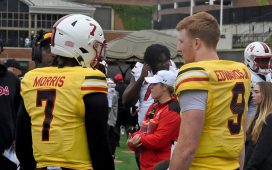The stirrup iron has the potential to modify the forces experienced by a horse and rider during ridden exercise. A range of stirrup designs are available, but previous research has not investigated if these modifications influence a rider’s position and interactions with the horse. A research team from Michigan State University recently set out to determine if novel flexible, flexible and rotatable, or traditional stirrups irons positively impacts the welfare and performance of the horse and rider.
Four riders rode using the three stirrup types. Hip, knee, and ankle angles, toe position, and force were measured at the highest and lowest point of the posting trot and canter.
No significant differences were seen between joint angles, toe position, or forces between the types of stirrups. At the highest point, average hip, knee, and ankle angles were 169°, 151°, and 94°, while the same joints averaged 139°, 124°, and 93° at the lowest point. Interestingly, right toes rotated more laterally regardless of stirrup type. The average forces applied were greatest at the highest point of the posting trot and lowest during the canter.
The researchers concluded that stirrup style minimally impacted rider position or the forces experienced; however, forces differed by gait. Future studies regarding how a rider’s experience and joint pains may contribute to asymmetries are warranted. For more information on this research, read the abstract in the Journal of Equine Veterinary Science.
Sign up for the University of Minnesota e-newsletter here.
New to the Paulick Report? Click here to sign up for our daily email newsletter to keep up on this and other stories happening in the Thoroughbred industry.
Copyright © 2020 Paulick Report.






